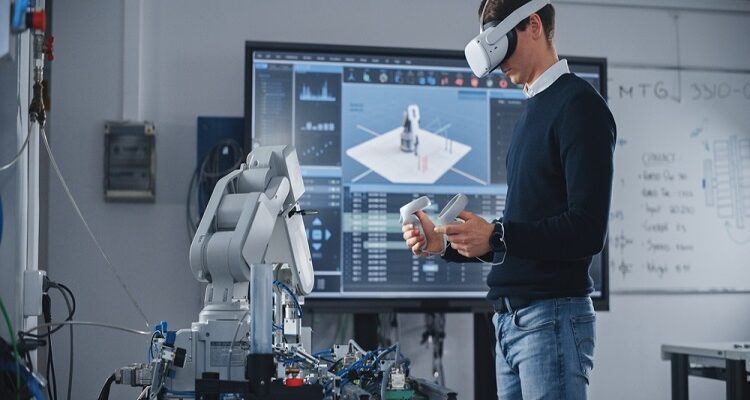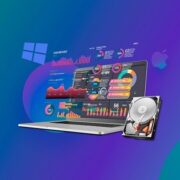The world of education is evolving at an unprecedented pace, thanks in no small part to the advent of advanced software technologies. As someone with a keen interest in how technology intersects with our daily lives, I’ve observed firsthand how these innovations are not just changing the way we learn, but also shaping the future of education. Let’s dive into six key ways this transformation is taking place.
Table of Contents
Interactive Learning Environments
Gone are the days of passive learning where students are mere recipients of information. Modern software has paved the way for interactive learning environments, making education a more engaging and immersive experience. For instance, virtual reality (VR) and augmented reality (AR) technologies are now being used to create realistic simulations and 3D models for various subjects, from biology to history. This hands-on approach aids in better understanding and retention of knowledge.
Personalized Learning Experiences
One size does not fit all in education. Advanced software solutions are enabling personalized learning experiences, tailoring content to meet individual student needs. Adaptive learning technologies can assess a student’s performance in real-time, adjusting the difficulty of tasks or suggesting resources based on their progress. It’s similar to how a roulette prediction software adapts to the unique gameplay, offering tailored advice for optimal results.
Enhanced Collaboration and Accessibility
Collaboration is a critical aspect of learning, and modern software has made it easier than ever. Cloud-based platforms allow students and teachers to work together seamlessly, regardless of their physical location. Furthermore, educational software has become more accessible, breaking down barriers for students with disabilities. Features like text-to-speech, screen readers, and customizable interfaces ensure that education is inclusive for all.
Data-Driven Insights
Just as businesses use data analytics for informed decision-making, educational institutions are now harnessing the power of data to enhance learning outcomes. Software tools can track student performance, providing valuable insights into their learning patterns. This data can be used to identify areas where students struggle, allowing educators to intervene promptly. The use of data in education is akin to how technology is revolutionizing other fields, such as home building.
Gamification in Education
Gamification, the application of game-design elements in non-game contexts, is becoming increasingly popular in educational software. By turning learning into a game, students are more engaged and motivated. Leaderboards, badges, and point systems make learning fun and competitive. It’s a testament to how software can transform mundane tasks into enjoyable experiences.
Future-Ready Skills Development
In today’s rapidly changing world, equipping students with future-ready skills is crucial. Advanced software in education isn’t just about imparting traditional knowledge. It’s also about teaching digital literacy, coding, and other tech skills that are essential in the modern workforce. Preparing students for the future means integrating technologies like AI, machine learning, and robotics into the curriculum.
In conclusion, the intersection of advanced software and education is creating a dynamic and effective learning landscape. It’s exciting to witness and be a part of this transformation, which is not only reshaping how we learn but also preparing us for the challenges and opportunities of the future. As technology continues to evolve, so too will the ways we educate and learn. And for those interested in how technology impacts other aspects of our lives, including our hobbies, check out this insightful piece on balancing a day job with hobbies.
Revolutionizing Teacher Training and Professional Development
The rise of advanced software isn’t just transforming student learning; it’s also revolutionizing teacher training and professional development. Educators now have access to a plethora of online courses and digital resources that enhance their teaching skills and subject knowledge. Interactive webinars, virtual workshops, and online peer collaboration platforms are equipping teachers with the latest educational strategies and technologies. This continuous professional development ensures that teachers remain at the forefront of educational innovation, ready to guide their students effectively in a tech-driven world.
The Role of Artificial Intelligence in Customized Education
Artificial Intelligence (AI) is playing an increasingly significant role in customizing educational experiences. AI algorithms can analyze a student’s learning habits, strengths, and weaknesses to provide customized recommendations and learning paths. This technology allows for the creation of a truly adaptive learning environment that caters to each student’s unique needs. AI-driven chatbots and virtual assistants can also provide real-time assistance and feedback, making the learning process more interactive and responsive. As AI continues to evolve, its impact on education is bound to grow, offering more sophisticated and personalized learning experiences.
Bridging the Digital Divide: Ensuring Equitable Access to Technology
A crucial aspect of integrating advanced software into education is addressing and bridging the digital divide. It’s essential to ensure equitable access to these technologies for students from all socio-economic backgrounds. Schools and educational institutions are increasingly focusing on providing digital devices and internet access to underprivileged students. Initiatives like community tech hubs, subsidized technology programs, and partnerships with tech companies are helping to close the gap. By ensuring that all students have access to these technological tools, we can provide equal opportunities for learning and development in a digital world.





















Comments